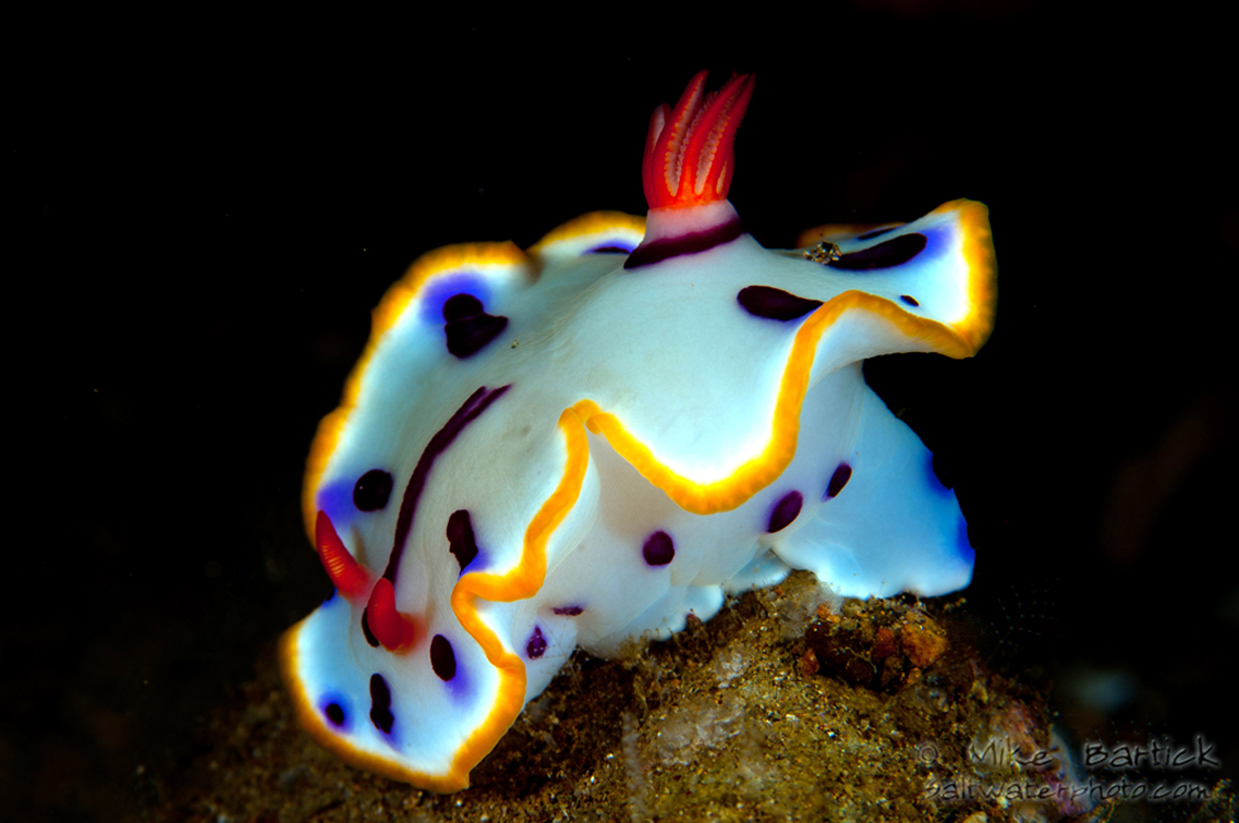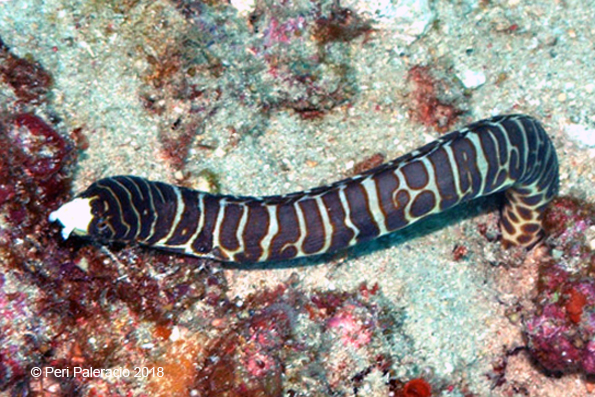 |
Hypselodoris perii
Image courtesy of Mike BartickCrystal Blue Resort GM
Anilao, Philippines
|
Peri shown with wife Maureen and daughter Malaya Photo courtesy of Kevin Lee  |
Hypselodoris perii Gosliner & R. Johnson in Epstein et al., 2018 I'll tell you nothing pleases me more than learning that this gorgeous chromodorid's new name recognizes recent dive buddy/guide from Batangas Province, Philippines, Peri Paleracio. Peri has worked closely with Terry Gosliner's gang of slugophiles, and is responsible for numerous new finds. Webmaster, Mike, featured this Hypselodoris as a H. sp. sometime back (April 2012 as BOW 777) with this amazing photo by Mike Bartick. Our second edition of Nudibranchs and Sea Slugs - Indo-Pacific updates all the latest in taxonomic nomenclature, like this new name, as well as presents new organization of the marine slugs based on the latest finds in the evolutionary relationships between species. You need to check it out! The species is white with a wide yellow marginal band. The gill and rhinophores are reddish-orange. There is also a characteristic red to black ring surrounding the gill pocket. The dorsal marking vary between specimens as seen in Mike B's photo here and that in NSSI. There is a longitudinal line on the center of the dorsum which may be red to dark, deep purple. There is also a series of lateral dashes on the dorsum which vary from red with purple at their outer edge to black with blue at their outer edge. What a magnificent species, named for a great dive guide and photographer. The subject is believed to be a deep water dweller. Mike Miller (Webmaster) was at Club Ocellaris with Terry Gosliner and Peri when Peri brought in the Holotype! Think the collection depth was around 120 ft. This may explain why it is seldom seen. Mike has been diving Anilao since the early 80's and has never seen it! Oh - and I should mention that this is not the only species named after Peri. He also discovered a new snake eel that old friends John McCosker and Gerald Allen have named after him. Congrats, Peri. References: McCosker John E. & Gerald R. Allen. 2012. Description of a new Snake Eel (Pisces: Ophichthidae: Myrichthys) from the Philippines. Aqua. 18 (1): 35-40. WEBMASTER'S NOTES: With some good fortune I was able to find the original video of H. perii taken by John Greenamyer back in 2010. This video was put up around 2012 as part of BOW 777 but expired a few years later. Enjoy then John's video of H. perii in SD or HD if you prefer higher definition! |
Sammamish, WA 98074
Nov., 2018
Send Dave email at davidwbehrens@gmail.com
Send Peri email at peripaleracio@yahoo.com
Send Mike email at Saltwaterphoto@live.com
Send John email at mrjhon69@verizon.net

Peri's Snake Eel

Attention all you Sluggers, and you know who you are! The NSSI 2nd edition is now available in ebook PDF form . The hard back version will become available Nov. 1st. Both will cost $65 (individually). You will need to jump through a few hoops to get the electronic version as pdf distribution is protected by Adobe ID!! Please read the following to enable reading your electronic purchase! This new 2nd Edition is updated and reorganized, including 185 new species. Among other features, the new edition includes additional photographs of species, an identification key, and an up-to-date classification reflecting the latest evolutionary relationships. The Indo-Pacific represents the largest expanse of tropical ocean in the world, stretching from the Indian Ocean coast of southern Africa and the Red Sea to the central Pacific of the Hawaiian Islands, Easter Island and the Marquesas. This region supports the most diverse marine fauna of any place in the world for most groups of marine organisms. The nudibranchs and sea slugs are no exception to this rule; there are about 3,000 described species of these organisms in the world and at least 40% of these have been found exclusively in the Indo-Pacific tropics. This book illustrates 2,138 Indo-Pacific nudibranchs and sea slugs, including many undescribed species.
|

|
